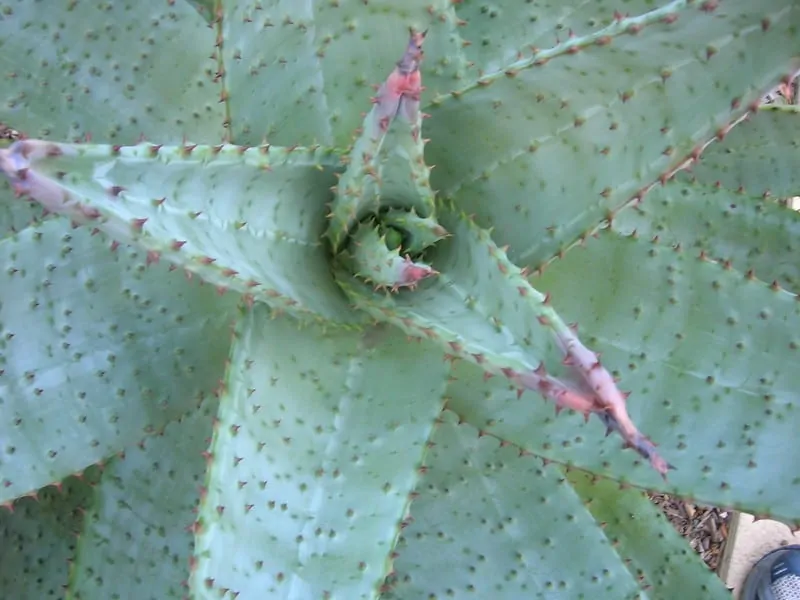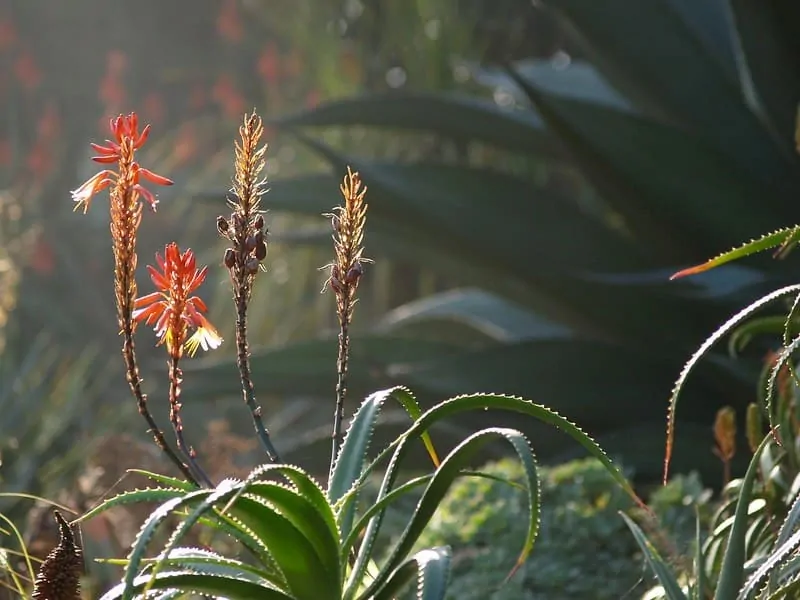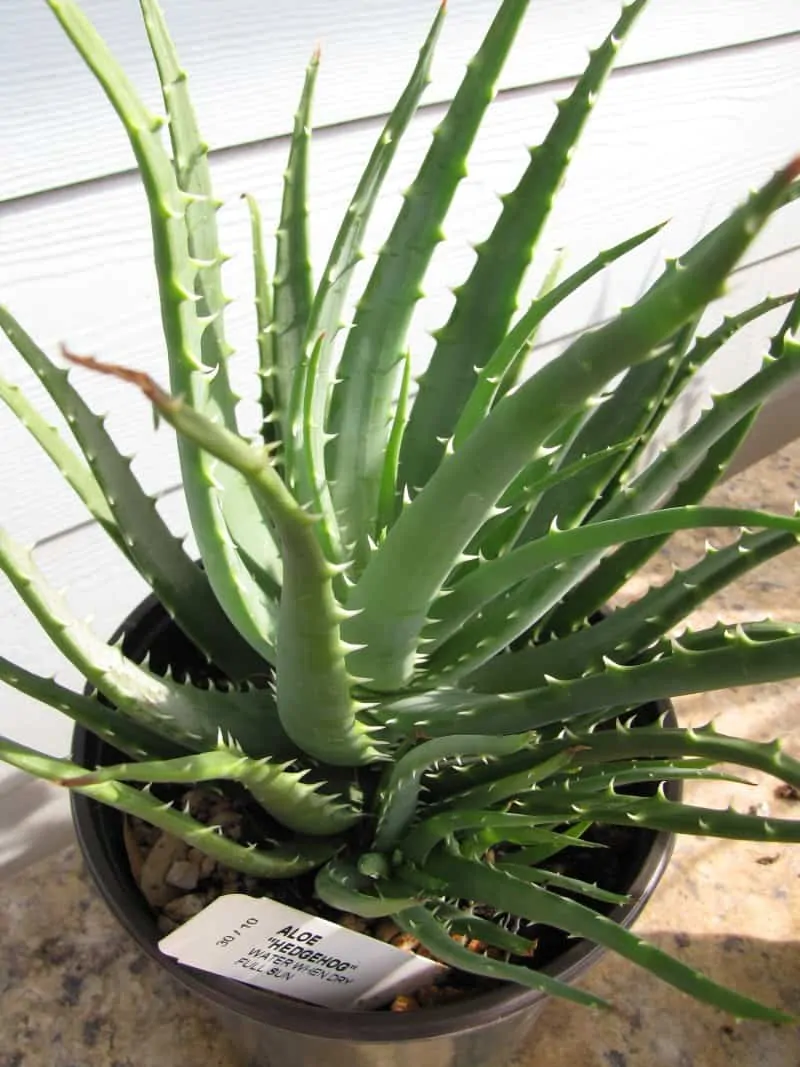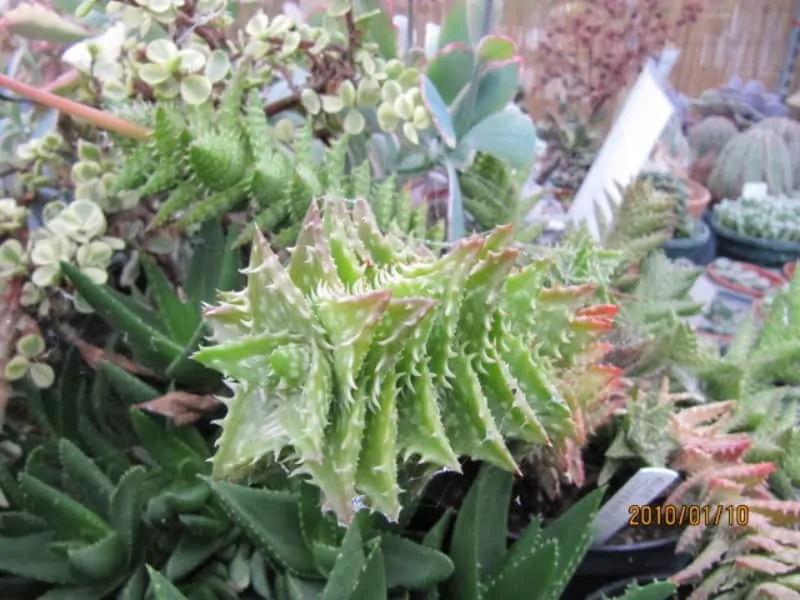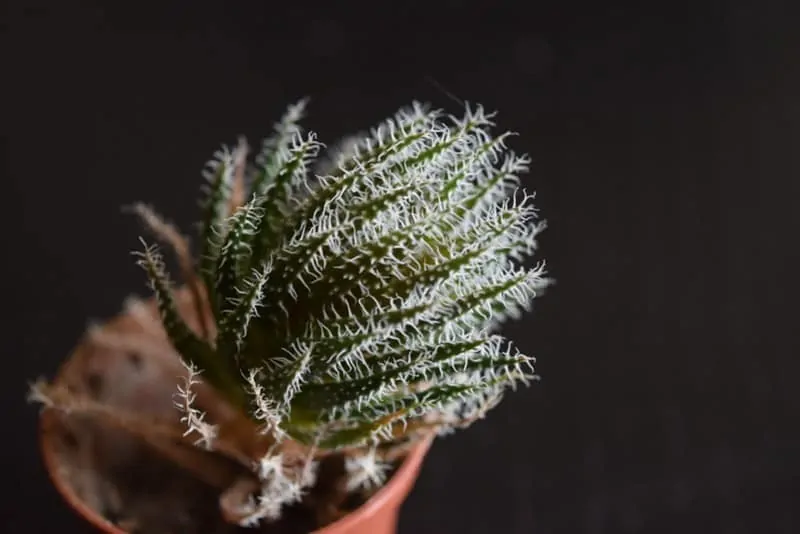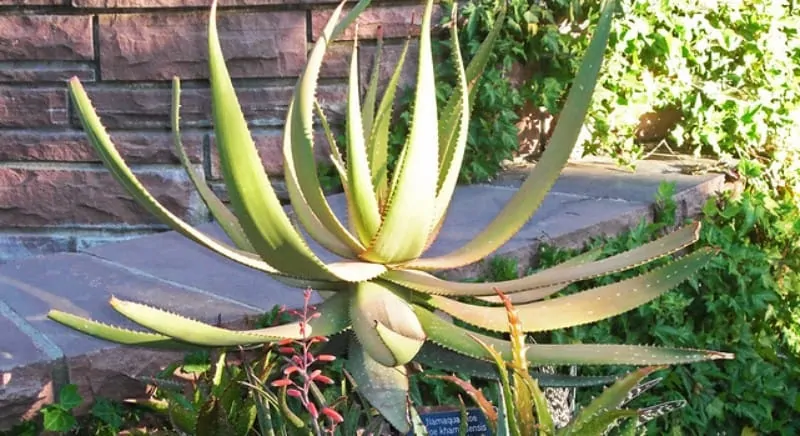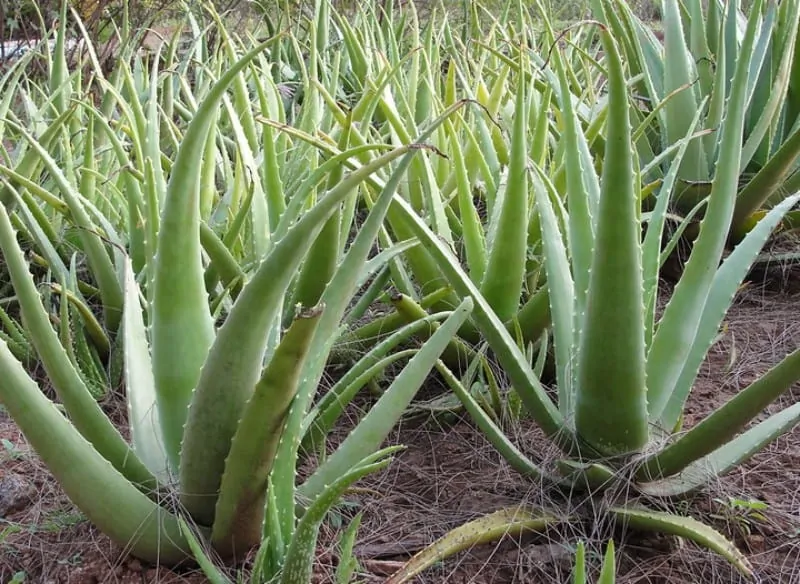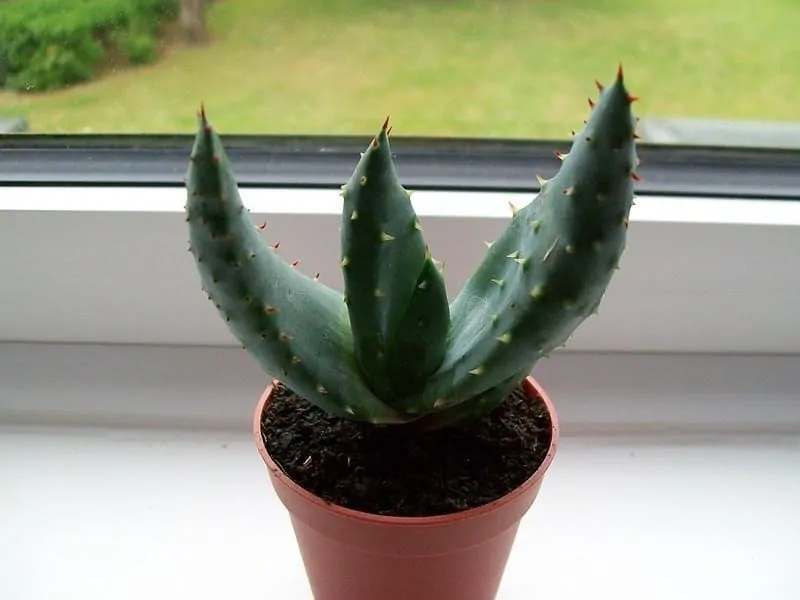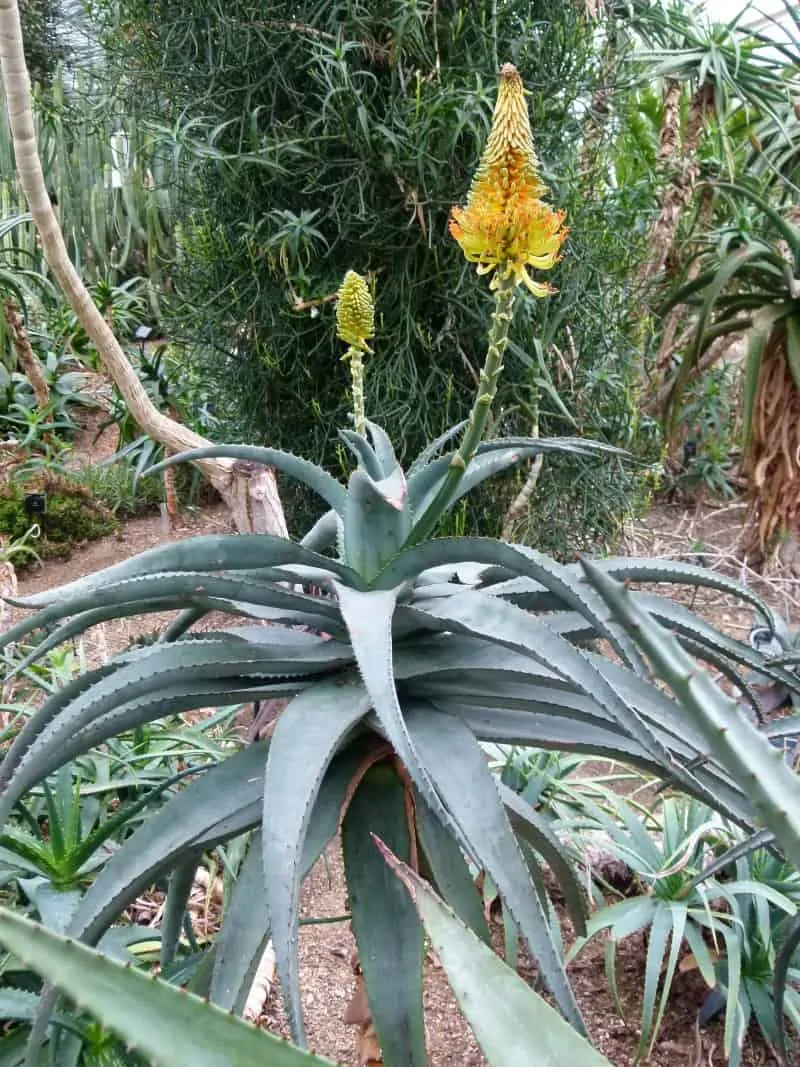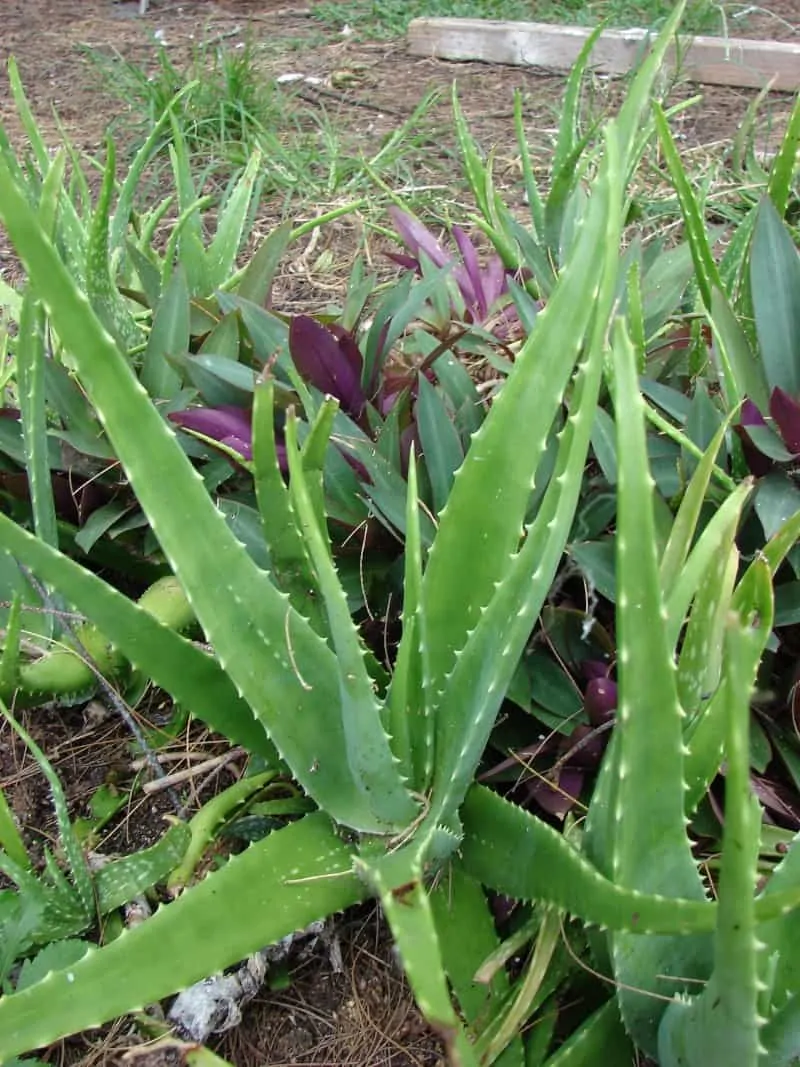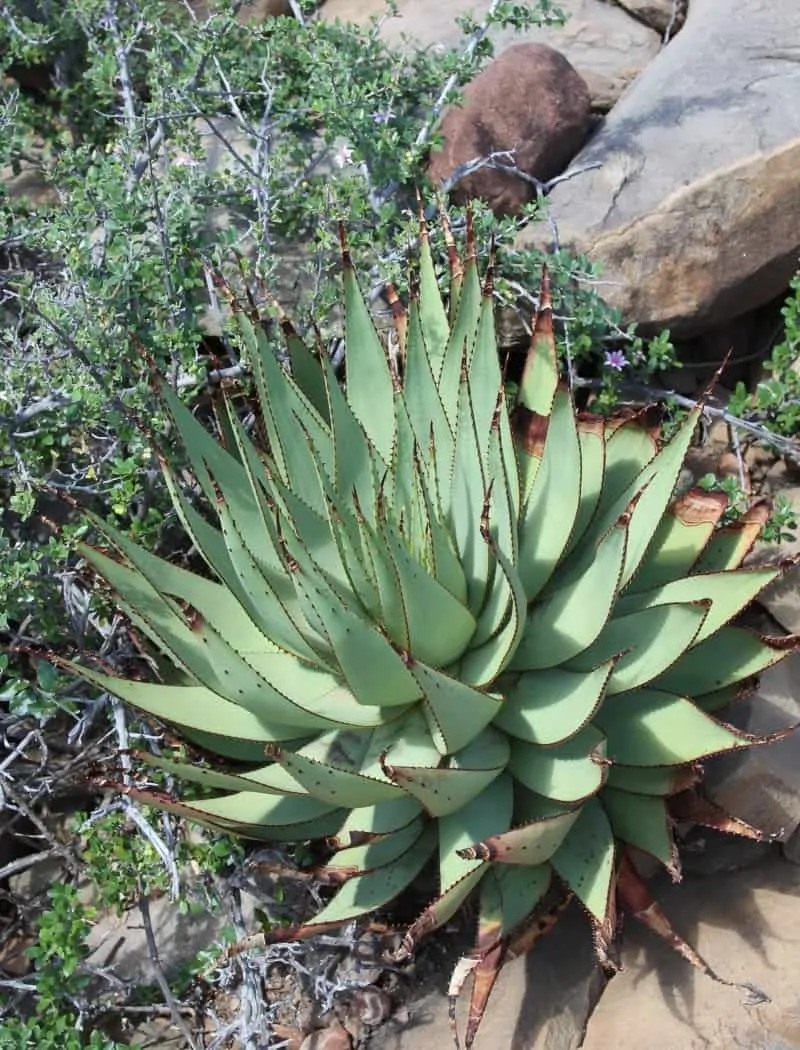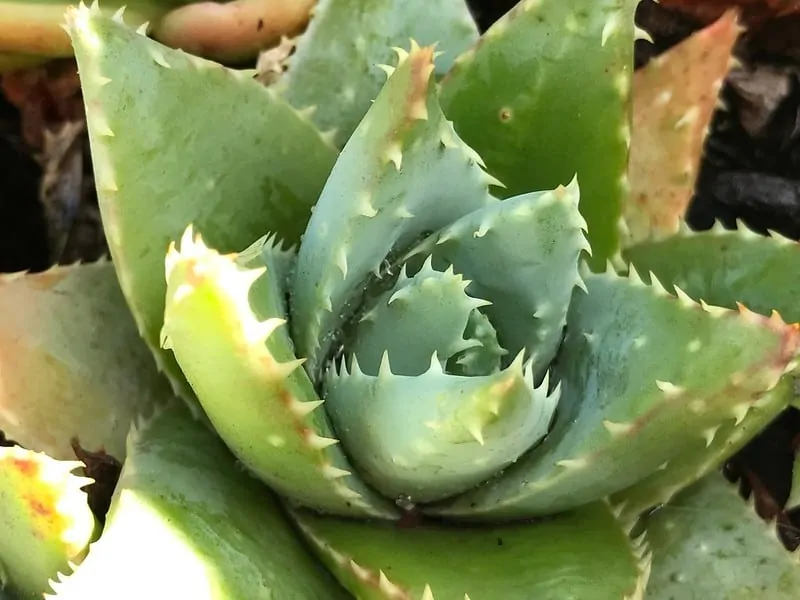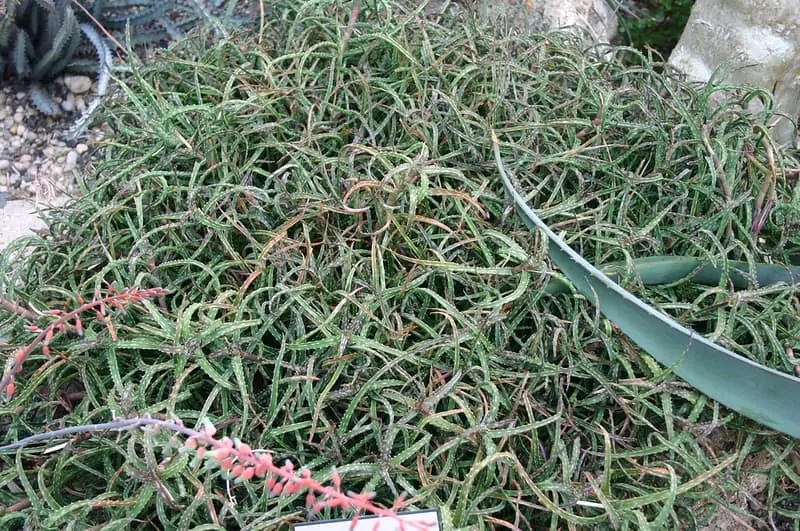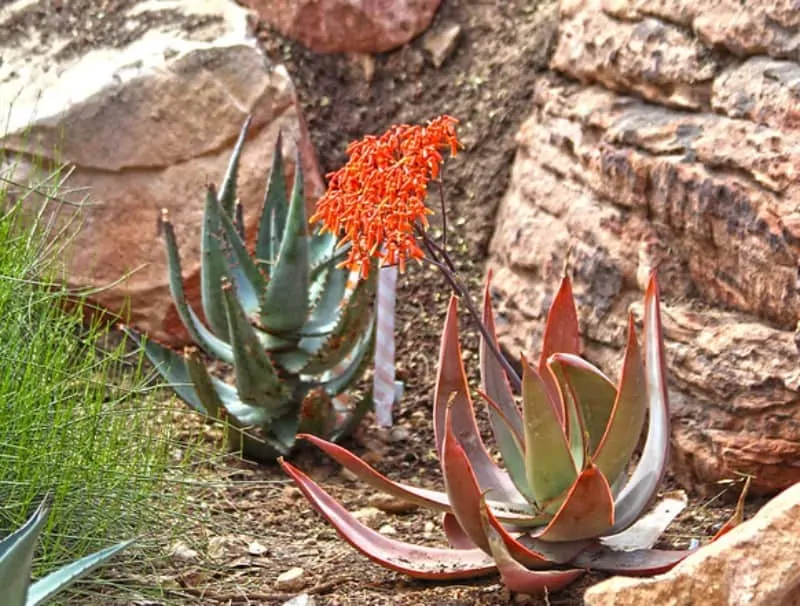For thousands of years, people have cultivated aloe plants for both aesthetic and therapeutic purposes. The aloe plant, popularly known as the “Wonder Plant,” has medicinal uses, and some species’ gel can be taken orally or directly applied to the skin to improve health and well-being.
If you ever wonder how many types of aloe vera plants are out there, you should know that there are over 400 varieties of the aloe vera plant. Most types of aloe are beloved common house plants as well because they are easy to grow, look spectacular, and need little to no maintenance. They are also easy to propagate.
As there are numerous types of succulents, Aloe comes in various shapes and sizes. In this article, we gathered 15 of the most spectacular types of aloe plants that could turn you from an aloe fan to an aloe collector and a fanatic.
1. Candelabra Aloe – Aloe arborescens – Asphodelaceae Family
Image by Ernest McGray, Jr. license under CC BY-SA 2.0
While you find the candelabra aloe in many varied habitats these days, its native environment and favorite places are mountainous areas such as exposed ridges and rocky outcrops. It is also a plant that grows and blooms in winter, which makes it specifically attractive to gardeners. Its name – arborescent – describes the plant’s tree-like aspect. The candelabra aloe is also called the krantz aloe. This name comes from Afrikaans and translates to a “rocky cliff”. As you can see, this is one of those types of aloe that is hard to grow in a succulent wall indoors but makes a terrific addition to your outdoor garden.
Light Requirements:
Bright, full sunlightWater Requirements:
Medium - the soil must be kept moist but not overwateredTemperature Range:
Ideal - 65 and 75 degrees Fahrenheit. Never expose to temps below 50 degrees FahrenheitNative to:
Southern Africa2. Hedgehog Aloe – Aloe humilis – Asphodelaceae Family
Image by Forest and Kim Starr license under CC BY 2.0
Don’t be fooled by the name, as this type of aloe is anything but humble. The term “humilis” translates into “low growing” and is a direct reference to the fact that this species does not grow too tall in height as it instead prefers to keep closer to the ground. In turns, it blooms more than most other types of aloe plants and when it does, it produces clusters of vividly colored and large blooms. If you have a passion for succulents, you should also check out our guide on the most spectacular flowering succulents to grow this year. We are sure you will find there some types of aloe plants and other succulents to surprise you with their gorgeous blooms. The hedgehog aloe is also known as the spider aloe.
Light Requirements:
Strong, bright light - direct only once acclimatedWater Requirements:
Low - never leave them in stagnant waterTemperature Range:
Ideal - 70 and 80 degrees Fahrenheit. Never expose to temps below 40 degrees FahrenheitNative to:
South Africa3. Spiral Aloe – Aloe polyphylla – Asphodelaceae Family
Image by brewbooks license under CC BY-SA 2.0
The spiral aloe is one of the most striking types of aloe as this impressive evergreen is easily recognizable. It is surprisingly symmetrical and will always grow in a five-pointed spiral both clockwise and anti-clockwise. It is also stem-less. The species is endemic to mountainous slopes and high altitudes and as such, thrives at lower temperatures. While stunning to look at, the spiral aloe is difficult to grow and dies easily once removed from its natural habitat. We would not recommend it for a drought-tolerant outdoor garden unless you are a pro at growing succulents.
Light Requirements:
Light shadeWater Requirements:
Low - moderate watering during growth and rare watering when dormantTemperature Range:
Ideal - 75 degrees Fahrenheit. Never expose to temps below 10 degrees FahrenheitNative to:
the Kingdom of Lesotho (near South Africa)4. Tiger Tooth Aloe
Image by Leonora (Ellie) Enking license under CC BY-SA 2.0
Continuing the series of unusual yet attractive types of aloe, we present to you the Tiger Tooth aloe. This aloe gets its name from the fact that its initially vertical and erect stems begin to arch over and get covered by leaves with different patterns. This aloe also blooms, but only irregularly. Its origin is just as interesting as its look as, while long cultivated, many were unsure of the plant’s origin. As many believed it to be a ‘juvenile’ aloe, it got the name “juvenna”. This soon became its official denominator and still stands even after the Tiger Tooth’s endemic location was confirmed.
Light Requirements:
Direct light and/or partially shaded lightWater Requirements:
Very Low - only water sparinglyTemperature Range:
Ideal - and degrees Fahrenheit. Never expose to temps below degrees FahrenheitNative to:
Kenya5. Aloe Haworthioides
Image by stephen boisvert license under CC BY 2.0
The Aloe haworthioides gets its name from the fact that it resembles the Haworthia species of succulents. It is a low-growing type of aloe that grows upwards in small, stemless clumps and has leaves covered in soft spines. The haworthioides will sport orange and highly fragrant blooms. This is also the type of aloe that is commonly found in offices since it can survive growing indoors.
Light Requirements:
Strong, Bright lightWater Requirements:
Low to Very Low - never allow it to sit in stagnant water or wet the leavesTemperature Range:
Ideal - 60 degrees Fahrenheit. Never expose to temps below 40 degrees FahrenheitNative to:
Madagascar6. Aloe Khamiesensis
Image by Andrey Zharkikh license under CC BY 2.0
This is not a common type of aloe as it has a fairly restricted area of distribution. It was first discovered in the Khamiesberg and Khamieskroon locations (which gave it its name) and any cultivated specimens are usually grown from seed. One of the interesting things about this type of aloe is that it blooms in mid-winter when conically-shaped orange and red flowers appear to delight those that see them. The Aloe khamiesensis is also called the tweederly, wild aloe, or aloeboom.
If you want to learn more about growing succulents from seeds, check out this guide right here! Moreover, in case succulent propagation is of interest to you, we also have a complete tutorial on succulent propagation methods!
Light Requirements:
Full, bright lightWater Requirements:
Very LowTemperature Range:
Ideal - and degrees Fahrenheit. Never expose to temps below 25-30 degrees FahrenheitNative to:
South Africa7. Aloe Barbadensis
Image by Thamizhpparithi Maari license under CC BY-SA 2.0
After so many exotic and quite rare types of aloe plants, we are returning to more easy-to-find species by telling you a bit more about the Aloe barbadensis or, as everyone knows it, the Aloe Vera. There is little left to say about such a well-known plant – just that if you try and harvest its medicinal and curative properties, we’d recommend first seeking specialized help. In case you are not familiar yet with the Aloe Vera variety, we recommend you check out the following guides, tutorials, and articles:
- Easy Aloe Vera Care Guide;
- How to Care for Succulents and Cacti Indoors;
- Why Are Succulent Leaves Falling Off;
Armed with so much information, you can grow the beautiful and non-pretentious Aloe Vera plant and become a succulent fan as well!
Light Requirements:
Full Sun and/or Light ShadeWater Requirements:
Low - allow soil to dry before wateringTemperature Range:
Ideal - 50 degrees Fahrenheit. Never expose to temps below 40 degrees FahrenheitNative to:
the Arabian Peninsula8. Aloe Aculeata
Image by Peter O’Connor aka anemoneprojectors license under CC BY-SA 2.0
The Aloe aculeata is the perfect name for this species as aculeata means ‘prickly’ – which is exactly what this plant looks like. Its native habitats are dry bushveld and rocky grassland outcrops which means it is drought-resistant (but sensible to frost) and also good for xeriscaping. An interesting thing about it is that the Aloe aculeata used to be featured on the back of the South African 10 cent coin. If xeriscaping is something you consider for the future of your property, we also recommend you check out our guides on best drought-tolerant plants and plants that don’t need much sunlight to thrive. Tweaking your landscape into it needing less water, energy, and maintenance is the sensible thing to do in our current climate change global context.
Light Requirements:
Light shadeWater Requirements:
Low but regular watering during summer and rare in winterTemperature Range:
Drought-resistantNative to:
South Africa9. Aloe Africana
Image by Jungle Rebel license under CC BY 2.0
The Aloe africana is an arborescent (tree-like) type of aloe vera which grows unbranched and solitary. While similar to other types of aloe plants, this can be easily distinguished thanks to its very specific flowers. As with other species on this list, the Aloe africana blooms during winter, and while the colors of the flowers are somewhat expected red, their position is not. Each flower will be inclined downwards but also be pointed upwards towards the tips.
Light Requirements:
Full SunWater Requirements:
Thrives in humidityTemperature Range:
Do not tolerate frost and frosty wintersNative to:
the Eastern Cape Province10. Aloe Massawana
Image by Forest and Kim Starr license under CC BY 2.0
The Aloe massawana is a very resistant plant that can go several weeks without water and in the drought and generally, in a variety of environments. It’s also one of the most common plants you can find. As it is so tough, it can cover quite large areas all by itself – if left alone. As it is so similar to the more common aloe vera, they are quite frequently mistaken for one another. Also, know that the Aloe massawana is ranked as Vulnerable on the IUCN Red List of Threatened Species.
Light Requirements:
Bright Light and/or Light Shade in summer monthsWater Requirements:
High during growth periodsTemperature Range:
Drought-resistant but sensitive to frostNative to:
Kenya and Tanzania11. Aloe Broomii
Image by Dr. Alexey Yakovlev license under CC BY-SA 2.0
The Aloe Broomii is also more commonly found under the names snake aloe or mountain aloe thanks to both the area where it stems from and because of its odd inflorescence. This flowering type of aloe usually grows on hilly and mountainous rocky slopes. Its inflorescence is considered bizarre because the plant’s extended bracts act to hide away the flowers and give this aloe a snake-like, sinuous look.
Light Requirements:
Full SunWater Requirements:
Deep water during growth period and then reduce the wateringTemperature Range:
Drought and Frost ResistantNative to:
Southern Africa12. Aloe Brevifolia
Image by Enrest McGray, Jr. license under CC BY-SA 2.0
The Aloe brevifolia is also commonly called the short-leaved aloe as it will not grow more than 4 inches tall. Despite its short stature, it grows in size and spreads horizontally so you can expect it to form large clumps of aloe. Its colors are one of its distinctive features as while they are pale blue and green in light shade, they can turn rosy pink and even golden yellow when exposed to full sun. Also, while listed as Vulnerable in the IUCN Red List for its natural habitat, it is an increasingly more common houseplant and rockery plant in temperate areas.
Light Requirements:
Full SunWater Requirements:
Moderate to LowTemperature Range:
Never expose to temps below 20 degrees FahrenheitNative to:
Western Cape, South Africa13. Aloe Bakeri
Image by Ryan Somma license under CC BY 2.0
The aloe bakeri is a somewhat odd-looking type of aloe that grows in multiple rosette branches. Already a combination of green and reddish-green and white all on its own, in the summer, it also turns even redder as it blooms and produces red or orange tubular flowers. Two interesting things about it are that it must be grown under glass in temperate areas and that it received the Award of Garden Merit from the Royal Horticultural Society.
Light Requirements:
Full SunWater Requirements:
Moderate - when in growth period and very rare afterwardsTemperature Range:
Never expose to temps below 50 degrees FahrenheitNative to:
Madagascar14. Aloe Striata
Image by Renee Grayson license under CC BY 2.0
The Aloe striata or the coral aloe, as it is most commonly known, is a ‘toothless’ species of aloe characterized by the long stripes on its leaves. These flat and broad leaves change their tint depending on the light as their normal pale gray-green hue turns blue-gray when in full shade or go pink in full sun. Also, in late winter or early spring, the Aloe striata blooms in extraordinary clusters of coral flowers that rise up to 2 feet above the plant itself for a candelabra-like look.
Light Requirements:
Full Sun and/or Light ShadeWater Requirements:
Low to AverageTemperature Range:
Drought and Salt ResistantNative to:
South Africa15. Aloe Ferox
Image by brewbooks license under CC BY-SA 2.0
The Aloe ferox is almost as famous and popular as Aloe Vera and has just as many medicinal properties too! Besides its use in cosmetics and as a food supplement, it is also the main ingredient of bitter aloes, a purgative medication. Still, this slow-growing but magnificent plant is most commonly left to grow and amaze us all with its splendor!
Light Requirements:
Full SunWater Requirements:
LowTemperature Range:
Drought-ResistantNative to:
South AfricaTypes of Aloe: Bottom Line
These were our favorite types of aloe plants we wanted to introduce to you today. Of course, there are more types of aloe that we love, including the magnificent Aloe Plicatilis, Aloe Aristata, or the Aloe Ciliaris – a gorgeous outdoor aloe plant type that attracts butterflies to your garden and needs almost no maintenance.
If you want us to talk more about some types of aloe plants that you love or grow, feel free to use the comment section below and tell us which aloe varieties you want us to discuss in more detail! Until then, it is your turn to tell us about your favorite types of aloe plants that you host at home either outside in the garden or inside, in succulent walls, decorative succulent pots, self-watering planters, and so on.
We would love to hear from you and more about your experiences with growing different types of aloe and other succulents!

